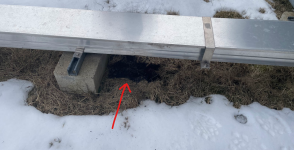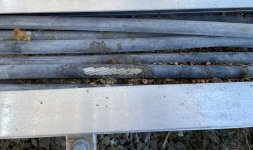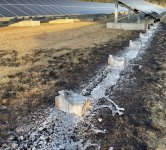Thought I would put this out there for others. Had a 2.5 meg inverter go down on a ground fault. Went to the site to start looking for the fault and found a small grass area roughly 8" x 18" under a cable tray burnt. A few minutes later full blown fire in the cable tray with about a 2' section missing. Believed to be caused by rodents chewing on the string wiring that then shorted out and melted through the feeders causing a dead short in 2 400 amp CB. Cable tray has covers that will be removed to expose the wiring so that hopefully hawks and owls will take care of the probleum once repairs are made.

Arrow indicated where the fault is located above in the cable tray.
5 minutes later.

Arrow indicated where the fault is located above in the cable tray.

5 minutes later.



